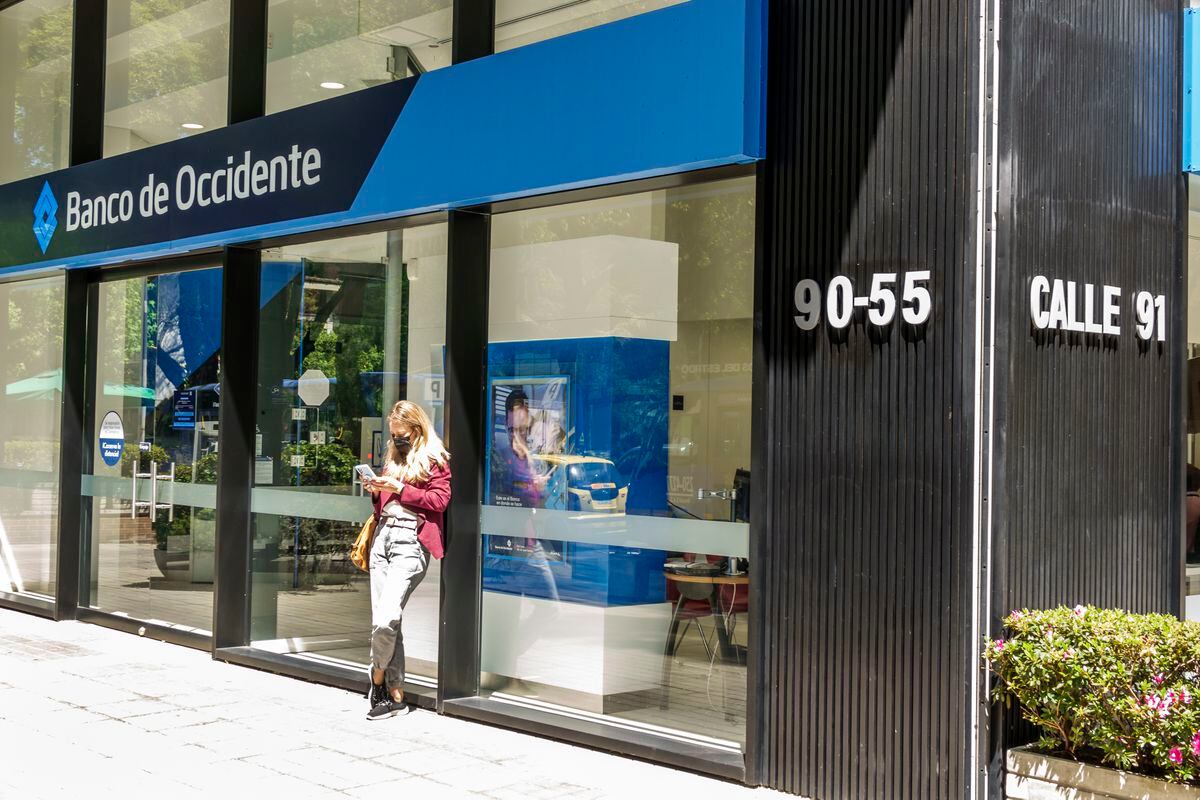A woman uses her phone outside a Banco de Occidente branch in Bogotá, Colombia. Jeff Greenberg (Getty Images)
Colombian banks remain solid after the pandemic, posting profits of 14.2 trillion pesos in 2022. The result is included in the current report on the financial system for that year, prepared by the Superfinanciera and published this Monday.
However, the figure represents an increase of just 2.1% compared to 2021, when inflation was 13.2%.
In fact, its profitability dropped: revenue as a proportion of its assets, known in the financial world as ROA, dropped from 1.87% to 1.67%.
That drop reflects a year that started well and ended in a clear economic slowdown.
Despite the fact that the financial system as a whole (banks, trust companies, insurers, pension fund administrators and other entities) reached the highest number of assets in its history, with 2,651 trillion, in real terms it managed less resources than in 2021 As the Superintendency explains, although these assets apparently grew by 9.4%, "In real terms, the annual variation was -3.3%."
This, again, because growth was less than inflation.
Financial activity was spurred on by the recovery after the pandemic crisis and record GDP growth in 2021, at 10.6%.
The consumption boom of Colombian households that came out, after two years of sanitary confinements, to invest and spend sufficiently accentuated to maintain an accelerated growth of last year up to 7.5% registered by DANE.
But in the final months of last year that growth ran out of steam.
In the case of the financial sector, this can be seen in the fact that loans grew, but less than in 2021. "The loan portfolio closed 2022 with lower growth than that reported in 2021, particularly due to the slowdown in the consumer portfolio," he explains. the report of the Financial Superintendence.
What fell the most was credit to buy housing, since it only grew 0.9% in real terms.
In addition to this slowdown, the entity that monitors financial companies reported some signs of deterioration.
Although loans more than 30 days past due grew less than inflation, the value of consumer loans (such as credit cards) that reflected non-payment for more than a month “accelerated their growth rate to 29.8% ”.
Curiously, this is the segment to which most banks announced that they will lend at a lower rate as of those days.
In any case, the Superfinanciera leaves a message of calm about the solidity of the sector.
He explains that "for every peso of past-due portfolio, credit institutions have about $1.6 to cover it" and that "solvency remained at sufficient levels to accompany the placement and withstand a possible increase in portfolio deterioration expected in 2023."
In other words, banks and other entities have more than enough liquid resources to respond in the event that more families and companies fail to pay their obligations on time.
The report comes just as the United States is grappling with a two-bank failure that has put pressure on markets and caused jitters in the country.
Subscribe here
to the EL PAÍS newsletter on Colombia and receive all the latest information on the country.

